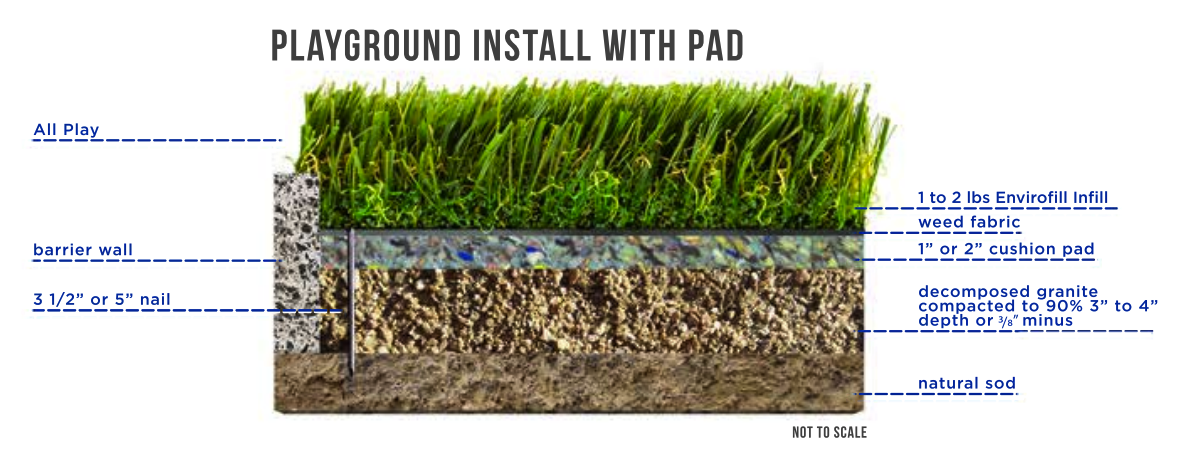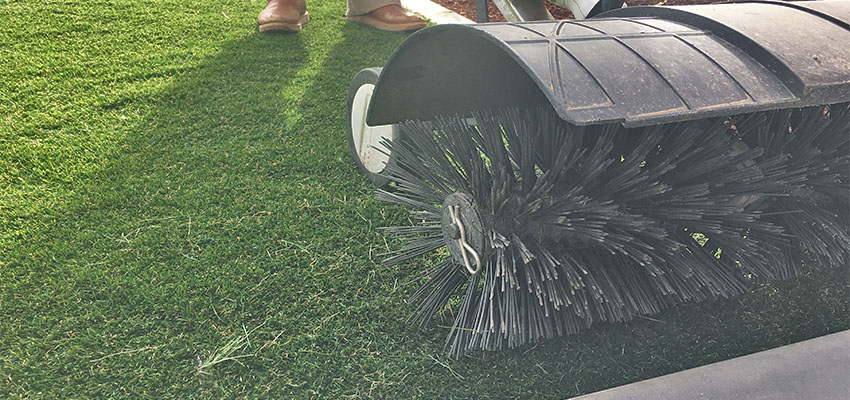
In recent years, many homeowners and businesses have moved into replacing natural grass or yards with artificial turf. Artificial turf has a lot of advantages in many scenarios and is an excellent option for numerous reasons.
Artificial turf has much less maintenance than a natural yard, which appeals to homeowners. It is also an perfect option for sports fields as they will not be damaged nearly as quickly as natural grass and dirt. It also does not attract almost as many weeds or bugs as other natural yards.
Turf can work in back and front yards, poolside, patios, fields, and plenty of other places where grass could grow. The biggest question still remains, is it safe for the environment? With increasing concerns concerning the environment in the last few decades, it is a valid question that has to be asked.
Pros of artificial turf
Although the turf is not natural and does not come with the benefits attached to regular grass, there are still numerous positives for the environment regarding artificial turf.
For starters, chemicals such as pesticides and weed killers are unnecessary since these are not common issues. Some bugs or weeds may come about in the artificial grass because of the wind blowing in dirt or seeds, as well as bugs simply being nomadic creatures, but it will not be nearly as much as grass attracts. Furthermore, these kinds of chemicals are harmful to both humans and animals. Not only this, but it could cause even more issues if the chemicals reach runoff water. Because the turf does not need this, it is safer in this aspect.
The turf also does not need nearly as much water as natural grass. And with water usage being as crucial as it is, not needing to water grass constantly, especially in the summer months, can add up very quickly. Of course, the turf yards will still need grass for cooling and cleaning purposes, but it will be a fraction of the amount and cost required for natural grass yards.
It can also reduce carbon emissions to some extent. While some will likely be produced because of the installation, items such as lawn mowers and hedge trimmers will not be necessary. Artificial grass does not grow because it is artificial and does not require this kind of maintenance to upkeep the area. On the surface, this does not seem like a drastic amount of carbon emissions, but when you think about how many times you mow your lawn, you might begin to see how this could be better for the environment.
Artificial turf is also recyclable, contradicting common belief. The turf can typically last anywhere from 20-25 years with good maintenance and no drastic scenarios like extreme weather. A lot of times, the turf will be disposed of and placed in landfills, but more recently, that has not been the case. The material used to make the turf can be recyclable, or other parts can be melted down to go towards materials for new turf.
Cons of artificial turf
With anything of this nature, there, of course, will be the negative side of things. Although turf has many pros to the installation, there are still numerous issues on the flip side.
One issue is that turf is simply not an environmental replacement for grass. While it can look and feel the same, it still does not provide the same environmental benefits as grass. A huge part of having plants, mainly grass, is for producing oxygen and consuming carbon dioxide. This helps when it comes to bugs but not other animals that may be coming to benefit the yard.
Heat can also be a significant problem when it comes to the turf. Since it is artificial, it reflects heat more than natural grass, which can create uncomfortably, and if not unsafe, conditions depending on the scenario. Water can be used to keep the area cooler, but something like a soccer field made of turf in the middle of the summer may be too hot and cause sweltering conditions. The astroturf could also overheat and begin to melt in drastic situations, which could cause a pair of shoes to be damaged.
Depending on the location of the artificial turf, it could also cause problems for the natural vegetation in the surrounding areas. Since the turf is made of plastic, it takes a long time to break down and deteriorate. If loose turf gets caught in the wind, it could end up in natural grass or dirt and cause problems for the natural area since it cannot be broken down. Not only this but a large amount of plastic is used, to begin with. While it can be used to make more turf in the future, any mass amount of plastic used is never the safest for the environment.

Is artificial turf safe for the environment?
If installed and maintained correctly, there should be no genuine issue for the environment when installing the artificial turf. There are a lot of pros and cons when it comes to turf and the environment. Mostly, this is up to interpretation depending on how a person feels about these pros and cons. Turf will not truly hurt or benefit the environment in favor of one another.

Recent Comments